Ziming Li
OneRec-V2 Technical Report
Aug 28, 2025Abstract:Recent breakthroughs in generative AI have transformed recommender systems through end-to-end generation. OneRec reformulates recommendation as an autoregressive generation task, achieving high Model FLOPs Utilization. While OneRec-V1 has shown significant empirical success in real-world deployment, two critical challenges hinder its scalability and performance: (1) inefficient computational allocation where 97.66% of resources are consumed by sequence encoding rather than generation, and (2) limitations in reinforcement learning relying solely on reward models. To address these challenges, we propose OneRec-V2, featuring: (1) Lazy Decoder-Only Architecture: Eliminates encoder bottlenecks, reducing total computation by 94% and training resources by 90%, enabling successful scaling to 8B parameters. (2) Preference Alignment with Real-World User Interactions: Incorporates Duration-Aware Reward Shaping and Adaptive Ratio Clipping to better align with user preferences using real-world feedback. Extensive A/B tests on Kuaishou demonstrate OneRec-V2's effectiveness, improving App Stay Time by 0.467%/0.741% while balancing multi-objective recommendations. This work advances generative recommendation scalability and alignment with real-world feedback, representing a step forward in the development of end-to-end recommender systems.
Kwai Keye-VL Technical Report
Jul 02, 2025Abstract:While Multimodal Large Language Models (MLLMs) demonstrate remarkable capabilities on static images, they often fall short in comprehending dynamic, information-dense short-form videos, a dominant medium in today's digital landscape. To bridge this gap, we introduce \textbf{Kwai Keye-VL}, an 8-billion-parameter multimodal foundation model engineered for leading-edge performance in short-video understanding while maintaining robust general-purpose vision-language abilities. The development of Keye-VL rests on two core pillars: a massive, high-quality dataset exceeding 600 billion tokens with a strong emphasis on video, and an innovative training recipe. This recipe features a four-stage pre-training process for solid vision-language alignment, followed by a meticulous two-phase post-training process. The first post-training stage enhances foundational capabilities like instruction following, while the second phase focuses on stimulating advanced reasoning. In this second phase, a key innovation is our five-mode ``cold-start'' data mixture, which includes ``thinking'', ``non-thinking'', ``auto-think'', ``think with image'', and high-quality video data. This mixture teaches the model to decide when and how to reason. Subsequent reinforcement learning (RL) and alignment steps further enhance these reasoning capabilities and correct abnormal model behaviors, such as repetitive outputs. To validate our approach, we conduct extensive evaluations, showing that Keye-VL achieves state-of-the-art results on public video benchmarks and remains highly competitive on general image-based tasks (Figure 1). Furthermore, we develop and release the \textbf{KC-MMBench}, a new benchmark tailored for real-world short-video scenarios, where Keye-VL shows a significant advantage.
SchemaAgent: A Multi-Agents Framework for Generating Relational Database Schema
Mar 31, 2025Abstract:The relational database design would output a schema based on user's requirements, which defines table structures and their interrelated relations. Translating requirements into accurate schema involves several non-trivial subtasks demanding both database expertise and domain-specific knowledge. This poses unique challenges for automated design of relational databases. Existing efforts are mostly based on customized rules or conventional deep learning models, often producing suboptimal schema. Recently, large language models (LLMs) have significantly advanced intelligent application development across various domains. In this paper, we propose SchemaAgent, a unified LLM-based multi-agent framework for the automated generation of high-quality database schema. SchemaAgent is the first to apply LLMs for schema generation, which emulates the workflow of manual schema design by assigning specialized roles to agents and enabling effective collaboration to refine their respective subtasks. Schema generation is a streamlined workflow, where directly applying the multi-agent framework may cause compounding impact of errors. To address this, we incorporate dedicated roles for reflection and inspection, alongside an innovative error detection and correction mechanism to identify and rectify issues across various phases. For evaluation, we present a benchmark named \textit{RSchema}, which contains more than 500 pairs of requirement description and schema. Experimental results on this benchmark demonstrate the superiority of our approach over mainstream LLMs for relational database schema generation.
DyWA: Dynamics-adaptive World Action Model for Generalizable Non-prehensile Manipulation
Mar 21, 2025Abstract:Nonprehensile manipulation is crucial for handling objects that are too thin, large, or otherwise ungraspable in unstructured environments. While conventional planning-based approaches struggle with complex contact modeling, learning-based methods have recently emerged as a promising alternative. However, existing learning-based approaches face two major limitations: they heavily rely on multi-view cameras and precise pose tracking, and they fail to generalize across varying physical conditions, such as changes in object mass and table friction. To address these challenges, we propose the Dynamics-Adaptive World Action Model (DyWA), a novel framework that enhances action learning by jointly predicting future states while adapting to dynamics variations based on historical trajectories. By unifying the modeling of geometry, state, physics, and robot actions, DyWA enables more robust policy learning under partial observability. Compared to baselines, our method improves the success rate by 31.5% using only single-view point cloud observations in the simulation. Furthermore, DyWA achieves an average success rate of 68% in real-world experiments, demonstrating its ability to generalize across diverse object geometries, adapt to varying table friction, and robustness in challenging scenarios such as half-filled water bottles and slippery surfaces.
Graph Neural Networks for Databases: A Survey
Feb 19, 2025Abstract:Graph neural networks (GNNs) are powerful deep learning models for graph-structured data, demonstrating remarkable success across diverse domains. Recently, the database (DB) community has increasingly recognized the potentiality of GNNs, prompting a surge of researches focusing on improving database systems through GNN-based approaches. However, despite notable advances, There is a lack of a comprehensive review and understanding of how GNNs could improve DB systems. Therefore, this survey aims to bridge this gap by providing a structured and in-depth overview of GNNs for DB systems. Specifically, we propose a new taxonomy that classifies existing methods into two key categories: (1) Relational Databases, which includes tasks like performance prediction, query optimization, and text-to-SQL, and (2) Graph Databases, addressing challenges like efficient graph query processing and graph similarity computation. We systematically review key methods in each category, highlighting their contributions and practical implications. Finally, we suggest promising avenues for integrating GNNs into Database systems.
AutoKaggle: A Multi-Agent Framework for Autonomous Data Science Competitions
Oct 29, 2024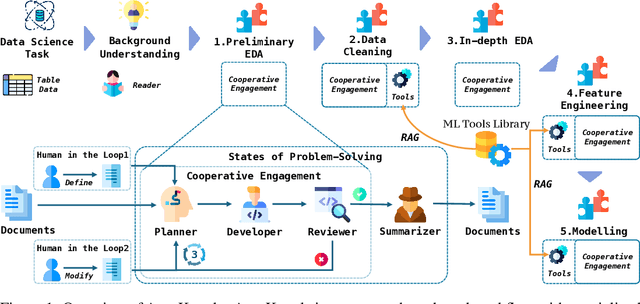



Abstract:Data science tasks involving tabular data present complex challenges that require sophisticated problem-solving approaches. We propose AutoKaggle, a powerful and user-centric framework that assists data scientists in completing daily data pipelines through a collaborative multi-agent system. AutoKaggle implements an iterative development process that combines code execution, debugging, and comprehensive unit testing to ensure code correctness and logic consistency. The framework offers highly customizable workflows, allowing users to intervene at each phase, thus integrating automated intelligence with human expertise. Our universal data science toolkit, comprising validated functions for data cleaning, feature engineering, and modeling, forms the foundation of this solution, enhancing productivity by streamlining common tasks. We selected 8 Kaggle competitions to simulate data processing workflows in real-world application scenarios. Evaluation results demonstrate that AutoKaggle achieves a validation submission rate of 0.85 and a comprehensive score of 0.82 in typical data science pipelines, fully proving its effectiveness and practicality in handling complex data science tasks.
Holistic Automated Red Teaming for Large Language Models through Top-Down Test Case Generation and Multi-turn Interaction
Sep 25, 2024Abstract:Automated red teaming is an effective method for identifying misaligned behaviors in large language models (LLMs). Existing approaches, however, often focus primarily on improving attack success rates while overlooking the need for comprehensive test case coverage. Additionally, most of these methods are limited to single-turn red teaming, failing to capture the multi-turn dynamics of real-world human-machine interactions. To overcome these limitations, we propose HARM (Holistic Automated Red teaMing), which scales up the diversity of test cases using a top-down approach based on an extensible, fine-grained risk taxonomy. Our method also leverages a novel fine-tuning strategy and reinforcement learning techniques to facilitate multi-turn adversarial probing in a human-like manner. Experimental results demonstrate that our framework enables a more systematic understanding of model vulnerabilities and offers more targeted guidance for the alignment process.
Fed-MUnet: Multi-modal Federated Unet for Brain Tumor Segmentation
Sep 02, 2024
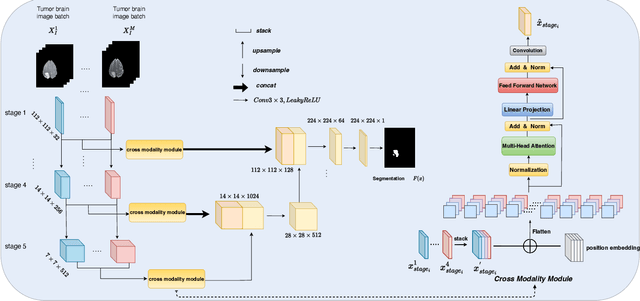


Abstract:Deep learning-based techniques have been widely utilized for brain tumor segmentation using both single and multi-modal Magnetic Resonance Imaging (MRI) images. Most current studies focus on centralized training due to the intrinsic challenge of data sharing across clinics. To mitigate privacy concerns, researchers have introduced Federated Learning (FL) methods to brain tumor segmentation tasks. However, currently such methods are focusing on single modal MRI, with limited study on multi-modal MRI. The challenges include complex structure, large-scale parameters, and overfitting issues of the FL based methods using multi-modal MRI. To address the above challenges, we propose a novel multi-modal FL framework for brain tumor segmentation (Fed-MUnet) that is suitable for FL training. We evaluate our approach with the BraTS2022 datasets, which are publicly available. The experimental results demonstrate that our framework achieves FL nature of distributed learning and privacy preserving. For the enhancing tumor, tumor core and whole tumor, the mean of five major metrics were 87.5%, 90.6% and 92.2%, respectively, which were higher than SOTA methods while preserving privacy. In terms of parameters count, quantity of floating-point operations (FLOPs) and inference, Fed-MUnet is Pareto optimal compared with the state-of-the-art segmentation backbone while achieves higher performance and tackles privacy issue. Our codes are open-sourced at https://github.com/Arnold-Jun/Fed-MUnet.
Making Task-Oriented Dialogue Datasets More Natural by Synthetically Generating Indirect User Requests
Jun 16, 2024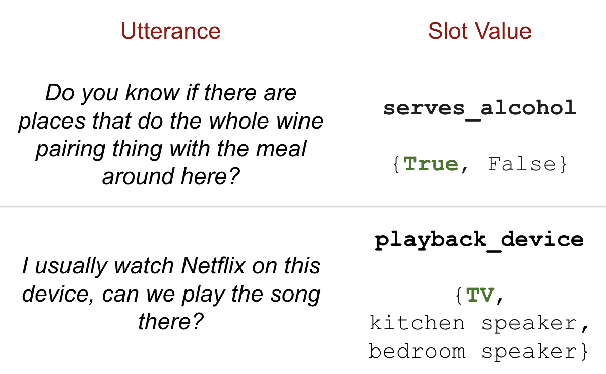
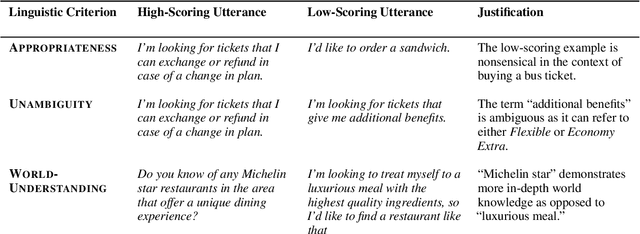
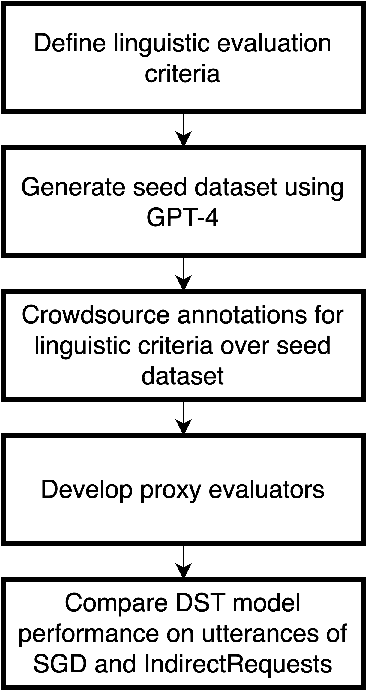
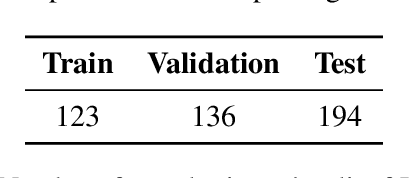
Abstract:Indirect User Requests (IURs), such as "It's cold in here" instead of "Could you please increase the temperature?" are common in human-human task-oriented dialogue and require world knowledge and pragmatic reasoning from the listener. While large language models (LLMs) can handle these requests effectively, smaller models deployed on virtual assistants often struggle due to resource constraints. Moreover, existing task-oriented dialogue benchmarks lack sufficient examples of complex discourse phenomena such as indirectness. To address this, we propose a set of linguistic criteria along with an LLM-based pipeline for generating realistic IURs to test natural language understanding (NLU) and dialogue state tracking (DST) models before deployment in a new domain. We also release IndirectRequests, a dataset of IURs based on the Schema Guided Dialog (SGD) corpus, as a comparative testbed for evaluating the performance of smaller models in handling indirect requests.
IndirectRequests: Making Task-Oriented Dialogue Datasets More Natural by Synthetically Generating Indirect User Requests
Jun 12, 2024



Abstract:Existing benchmark corpora of task-oriented dialogue are collected either using a "machines talking to machines" approach or by giving template-based goal descriptions to crowdworkers. These methods, however, often produce utterances that are markedly different from natural human conversations in which people often convey their preferences in indirect ways, such as through small talk. We term such utterances as Indirect User Requests (IURs). Understanding such utterances demands considerable world knowledge and reasoning capabilities on the listener's part. Our study introduces an LLM-based pipeline to automatically generate realistic, high-quality IURs for a given domain, with the ultimate goal of supporting research in natural language understanding (NLU) and dialogue state tracking (DST) for task-oriented dialogue systems. Our findings show that while large LLMs such as GPT-3.5 and GPT-4 generate high-quality IURs, achieving similar quality with smaller models is more challenging. We release IndirectRequests, a dataset of IURs that advances beyond the initial Schema-Guided Dialog (SGD) dataset in that it provides a challenging testbed for testing the "in the wild" performance of NLU and DST models.
 Add to Chrome
Add to Chrome Add to Firefox
Add to Firefox Add to Edge
Add to Edge